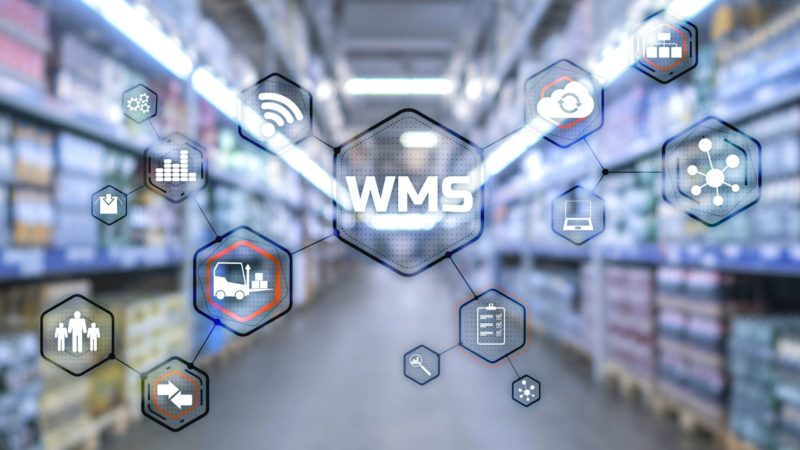Any business except for dropshipping or print-on-demand will require a storage facility. The most typical location is a fulfillment center, distribution center, or warehouse. Thus, any Shopify business that stores things in a warehouse knows the importance of Shopify warehouse management system.
The difference between executing customer orders fast and accurately while keeping costs low and hearing complaints about delayed or erroneous shipments is effective warehouse management.
Let’s dive into the ultimate guide from A to Z of Shopify warehouse management below.
Contents
- 1 Shopify Warehouse Management Overview
- 2 Why You Should Have Shopify Warehouse Management System
- 3 How To Choose A Shopify Warehouse Management System
- 4 Case Study: Implement Amazon’s “Customer-First” Inspired Approach To Warehousing Activities
- 5 Conclusion: Streamlined Logistics With Shopify Warehouse Management
Shopify Warehouse Management Overview
What is Shopify warehouse management?
The principles and practices involved in running a warehouse’s day-to-day operations refer to Shopify warehouse management. Examples are receiving and organizing warehouse space, scheduling personnel, maintaining inventory, and fulfilling orders.
To keep track of fulfillment operations, every merchant, from e-commerce-only to brick-and-mortar hybrid, requires a warehouse management system (WMS), which is software that helps warehouse and distribution operations run smoothly. Retailers also employ this automated technology to make it easier to plan, organize, staff, and control available resources throughout the supply chain.

You’ll be able to handle the following with just one:
- Returns: Automated procedure determines which goods are damaged, need to be relabeled, or should be returned to the shelf. WMS will help you display this information.
- Logistics in the warehouse: Instead of memorizing textual processes, warehouse employees can follow predetermined workflows within your WMS to improve consistency.
- Integrations: Most WMS packages connect to other software you currently have, such as shipping solutions and your e-commerce site. There is no need to manually feed data back and forth with this feature.
- Reporting and forecasting are two essential aspects of the job: These are visible within your WMS, ensuring that out-of-stock warnings do not deter potential customers.
Generally, WMS serves as a single hub for your warehouse or distribution center’s operational procedures. It also improves return on investment by giving you complete visibility into your inventory levels and storage, employee efficiency, demand forecasts, and retail fulfillment.
The differences between warehouse management & inventory management system

Is there a distinction between inventory and warehouse management? While there are some similarities between inventory and warehouse management, there are some significant variations.
Inventory management focuses solely on the items kept in a warehouse. Inventory management is a part of your supply chain that includes managing and overseeing purchases from suppliers and customers, stock storage, controlling the number of items for sale, and order fulfillment.
On the other hand, warehouse management is more concerned with the “journey” of individual objects moving from reception to shipment via the warehouse.
To be more specific, let’s look at the comparison table of warehouse management & inventory management.
| Capability | Warehouse Management | Inventory Management |
| Keeping track of the physical location of stock within a warehouse | ✔ | x |
| Providing an accurate stock count in all warehouses and stores | x | ✔ |
| Ability to efficiently handle orders, shipment, and delivery to customers | ✔ | ✔ |
| Managing stock at a single location | ✔ | x |
| Storing and controlling | All of the specifics of inventory control | Quantity |
| The topics are covered in the reports: | Physical Inventory | Financial Component Of Managing Inventory |
| The impact of third-party stakeholders such as suppliers and shipping partners as an analytical factor | More | Fewer |
Read more: Manage Inventory Easier – Comprehensive Shopify App Recommendation
Types of Shopify warehouse management systems
There are three common types of Shopify warehouse management, including
- Firstly, Standalone WMS: Standalone WMS are often on-premise systems that run on a company’s internal network. They are only used for warehouse management purposes. It’s the cheapest type of WMS, but it’s missing a lot of the functionality of an integrated software solution. Moreover, they can be combined with current solutions, but they’re only available as a one-time purchase with no other supply chain functions.
- Secondly, Integrated with ERP: These modules are available from the third-party integration service of Shopify agencies, such as BSS Commerce. It can replace all existing software and consolidate logistics into a single interface. If you don’t like your current software and wish to combine it all into one system, ERP software also can help.
This sort of WMS differs from standalone WMSs in that it includes warehouse management and a more comprehensive range of features. Also, determine whether you want to invest in a specialized WMS or an ERP system. It all relies on your company’s demands, size, ambitions, and current toolkit.

Find out more about Shopify ERP Integration – New Era For Large-Scale Enterprises?
- Thirdly, Supply chain management modules: You’ll get an overview of how your warehouse works, similar to a standalone WMS. However, the fundamental advantage of SCM is that it allows you to manage your whole supply chain with just one tool.
This Shopify warehouse management will automate Inventory management, product cycles, material procurement, and other typical warehousing duties. It can also manage vendor relationships and identify risks.
Why You Should Have Shopify Warehouse Management System
Enable logistical growth
WMS usually work with thousands of companies, including seasonal brands, high-growth brands, and everything in between, so they have a lot of data. They can conduct everything from shipping zone analysis to demand and inventory forecasting.
Moreover, continuously aggregating and learning from data allows you to optimize each warehouse for increased efficiency and give your customers lower shipping prices and transit times, all of which help you expand.
These factors help you get inventory quickly, pack boxes more efficiently, and fulfill orders on time.
Packages are processed and shipped faster
97% of consumers regard same-day shipping as rapid, while 95% view next-day shipping as quickly. Besides, one thing is sure: items must arrive at your clients’ doorsteps within 24 hours to be deemed gold standard.
Shopify warehouse management system improves supply chain efficiency and makes operations leaner. Each phase of the fulfillment process has its station in each warehouse region. For example, you can separate areas for each warehouse stage: picking, packing, labeling, returns, etc. To maximize output, each fulfillment associate focuses on one task per shift.
Setting up each stage in warehouse management also entails minimizing the number of physical steps required to move from one location to the next and organizing everything logically. The sooner this labor is completed, the sooner goods will be ready to ship.
Substantial time savings

A WMS connects directly to your e-commerce platform, allowing you to keep track of inventory. No need to worry about clients making orders for things out of stock. Faster fulfillment times and improved accuracy result from fewer inventory errors.
Furthermore, you may monitor their performance and use their data to improve and make better business decisions as they handle these chores for you.
Better storage allocation
Shopify warehouse management enables you to store each SKU in a specific storage area (e.g., a shelf, bin, pallet, or warehouse rack) appropriate for the warehouse structure and item. A warehouse management system can help determine the exact position of every SKU so you can recover it promptly after the inventory is in place.
Accurate warehouse management also allows you to keep track of inventory levels in real-time, ensuring that you never run out of goods or space. If you sell products with expiration dates or are subject to recalls, you can organize them by lot number and dispatch the oldest items first.
How To Choose A Shopify Warehouse Management System

Develop clearly-defined workflows
You’ll develop methodical, standardized routines for your team members to follow at all times if you take a deliberate approach. This entails taking command of your team while empowering your colleagues to make independent judgments as needed.
If everything goes as planned, your team can just carry on as usual. If something goes wrong, your personnel will know what to do and how to proceed in the most effective way possible. Furthermore, adding automated retrieval and picking solutions, such as improved pick routes and automated inventory management, to a WMS can help.
Manually inputting product information for returned items, such as customer, SKU, and the purchase price is very time-consuming. You can utilize RFID tags for scanning a product’s bar code, update stock levels, and execute a refund in seconds with a WMS.
As a result, your warehouse will have significantly less downtime and be far more productive overall.
Empower your teams
Warehouse staff can also set their workflows in motion as planned with the help of a suitable warehouse management methodology. Your team members should have at least one option for going forward at any given time.
Your warehouse management method will inform them more than just what to do.
- Firstly, they should be where they need to be.
- Secondly, what resources will they require?
- Thirdly, how to deal with unforeseen obstacles
- Lastly, who they’ll be collaborating with and reporting to for assistance
Get full use of resources
For starters, you’ll lose less time, money, and energy if there’s less friction and redundancy. Your business can succeed more if you obtain greater productivity from your varied resources. Besides, you will be able to extract additional value from your current resources.
In addition, you’ll know which team members are best suited for specific responsibilities if you have a well-defined Shopify warehouse management approach. Thus, you’ll be able to help your team members succeed.
And yet, you have to understand the features that a new WMS system must have and provide you with a checklist when vetting potential vendors.
However, regardless of the latest software’s specific capabilities, the time and effort required to create it is a significant factor to consider when selecting a WMS.

Each vendor should be familiar with supply chain management. Inventory management, order management, accounting, warehouse management, and EDI connection are all part of this. You must consider some elements before choosing a carrier:
- Begin with the vendor you select should be committed to meeting the evolving needs of the warehouse and logistics business and upgrading and developing the product.
- Moreover, consider the costs. Get a complete picture of the operational costs for each choice.
- It’s also worth asking whether the WMS vendor provides case studies on how other businesses of comparable size and industry have used the software successfully.
Make a decision
At this stage, you should have a list of WMS vendors to choose from at this stage. The fun part now begins: choose which one to utilize in your warehouse.
There is no such thing as a perfect solution. To recap, the best WMS for your work is within your budget and has proven case studies demonstrating how it has helped other businesses overcome challenges. It should also work with the existing tools and technologies you’re utilizing.
The perfect WMS has all of the functionality that your team has requested (and a few nice-to-haves, too). Finally, a WMS vendor with the training materials you need to instruct warehouse workers on utilizing the software is the icing on the cake.

Start integrating the WMS with your existing system once you’ve decided. According to Elliott Davidson, an e-commerce specialist at Parcel Master, you should:
Firstly, use a labeling scheme to organize your bin locations.
Secondly, don’t store all of a brand’s merchandise in the same place. The chances of selecting the wrong color, size, or even a slightly different product are greater.
Thirdly, your best-selling items should be on the racks closest to the packing benches to limit the distance pickers must go to process orders.
In addition, use a bar code scanner to do repeated quality assurance checks to ensure you pick and pack the correct products to reduce errors.
Ensure customer satisfaction
Keep your team’s focus on what it’s all about as you work out your Shopify warehouse management process: ensuring customers get what they want at the right time and (sometimes) even more.
Your procedure should incorporate details on how your whole strategy functions to ensure client happiness. This stage promotes the concept of “all for the customer,” but it also shows your employees how their efforts ultimately result in a better customer experience.
Incorporating customer-focused data into your warehouse management process will help uncover gaps or bottlenecks in your operations. You can then concentrate on making adjustments as needed, all while acting in your clients’ best interests.
Case Study: Implement Amazon’s “Customer-First” Inspired Approach To Warehousing Activities

Amazon has been a famous case study regarding warehouse management. Its approach to all operations and aims is based on “customer-first.” When it comes to its eCommerce company, warehousing is also one of its most competitive elements.
Everything should be built with your customers first, from the form of your storage facility to your operations and procedures. It may necessitate some significant changes initially, but everything will fall into place as your company expands, creating a seamless ecosystem with a customer-first mentality.
Automating return merchandise permission with prepaid return labels and whole interaction with your WMS, for example, streamlines operations while providing much-needed certainty. Similarly, you can include your customer’s anticipated outcome into your operating procedures to give your company a competitive advantage.
Conclusion: Streamlined Logistics With Shopify Warehouse Management
Shopify warehouse management, without a doubt, has its advantages. The proper software will enhance order and inventory accuracy, expedite logistics, and reduce human labor expenses. That will almost certainly affect your bottom line.
If your WMS does all of the above, your company’s bottom line will naturally improve. Across the board, you’ll be cutting costs – Less squandered resources, whether capital or otherwise, equals less money spent.
You can then reinvest this additional capital as needed in your company. With more cash on hand, you may make the essential changes to your business to boost your profits even more.
Choosing the best WMS for your warehouse operation will be determined by your operation’s characteristics and goals. Above all, the ideal WMS should assist your company increase efficiency and accurately filling orders, allowing you to do more with less. Because the primary purpose is to save money, the return on investment (ROI) is crucial.
Whether you’re looking to automate your warehouse operations for the first time or enhance an existing system, the information provided above will assist you in finding one that meets your needs.




